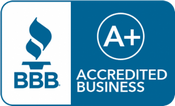As we approach the end of the year, business owners often ask us how to design bonus plans and how much to pay their employees. Our best advice can be found here.
Be forewarned, the following is extremely simple but not easy. But it’s based on real world practical results based on client case studies that achieved the desired behavior modifications and outcomes, so we encourage you to take a look.
First, the amount to budget. Approach this from two directions:
- Percentage of Profit, and
- Percentage of Salary
As a first general rule of thumb, unless you are dealing with a commissioned salesperson with a base salary, a range of 10% of total salary expenses up to around 25% is a good target. So, if your salary expenses pre-bonus are $1,000,000, you would budget between $100,000 and $250,000 to pay out in addition to the $1,000,000. (We’re not saying you must pay it, just that it’s a good, meaningful budget.) Anything lower than 10% doesn’t really mean as much to the employee, based on experience.
As a second general rule of thumb, look at a profit percentage, meaning “the bottom-line profits for the year for the company.” Start with a floor that the company must meet before a bonus is even triggered. This floor should, at a minimum, cover owner distributions, debt service, and any working capital deficits you are trying to cure X 1.15%.
For example, if owner distributions are $500,000 to cover owner living expenses plus estimated tax payments, debt payments (principal on term debt, line of credit debt if it was term debt over 5 years) are $50,000, and you’d like to have at least one payroll in cash savings at all time, and it will take another $100,000 to reach this goal, your budgeted profit target would be $650,000 X 1.15, or $750,000. The extra .15 is to create a ‘just in case’ buffer. Your discretion if you want to use this for bonus funding.
Let’s say your budgeted profit is $1,000,000, and, to hit this target profit, your team will have to at least bring their B+, A- game, not the C game, so you are happy to pay a bonus at this level. What you might consider doing then is creating a bonus pool that looks something like ‘after the first $750,000, 50% of all profit goes into a bonus pool’ - or $125,000. If you compare this to your targeted salary budget of between 10% and 25%, your bonus passes muster because it is (a) in your range, and (b) tied to the company’s performance.
Now, in allocating the bonus, you should allocate based on specific positive behavior attributes at the ‘role / employee’ level that are in their control. For example, hitting a new sales target might be a fine goal for a sales team, but for a manufacturing shop floor, they don’t have control of this because they only make what is sold. However, if a part of sales is based on the ability to fulfill the order, then manufacturing time might be a target. Reduction of scrap / rework might be a target. Managing inventory to a minimum level might be a target. These things are under the shop floor’s control.
Real world example: A construction client that implemented this approach went from $500,000 in profit to $4,000,000 in profit in three years. Sales only doubled. So, the rest was performance improvement, which was rewarded through a program described here.
Reach out to us with any questions, and check out these additional resources we’ve compiled to help you build your business:
- The Vault – our best advice in self-paced video form.
- Our eBook -- a free download to TRIPLE the value of your business.






